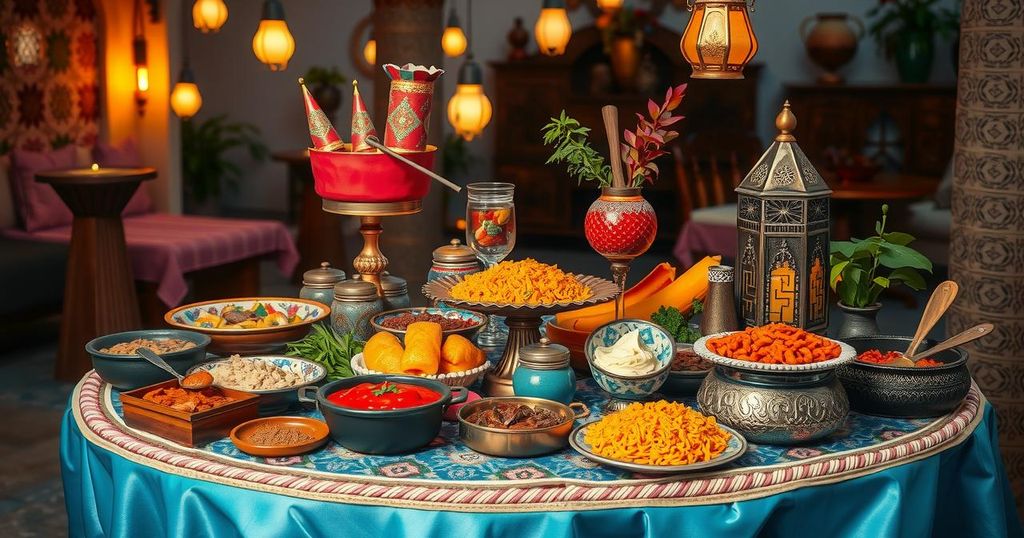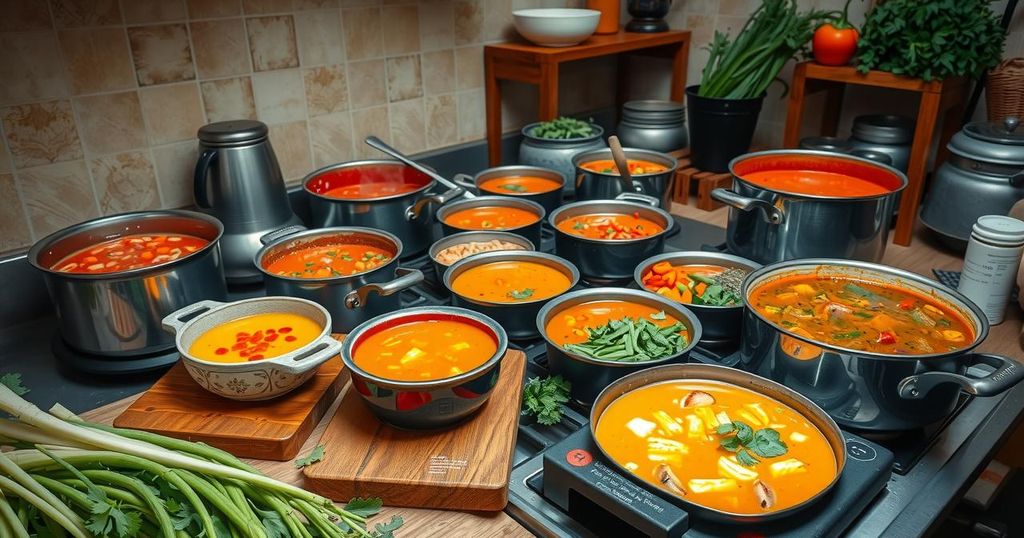Exploring Egypt’s Rich Traditions During the First Iftar of Ramadan
The article explores Egypt’s rich and diverse traditions of Iftar during Ramadan, focusing on how each governorate showcases its unique cuisine. Highlights include the emphasis on meat in Minya, the signature Damietta duck, and various local beverages in Port Said. Alexandria’s emphasis on family feasting and the preparation of traditional dishes also stands out, painting a vivid picture of cultural heritage.
During Ramadan, the Egyptian community celebrates with a joyous spirit, particularly marking the first Iftar gathering of the holy month. Each family prepares an exquisite array of traditional dishes that reflect the culinary diversity of the country, showcasing both creativity and heritage. This article explores the distinct flavors and customs associated with the first Iftar across various governorates in Egypt, highlighting the special dishes that hold sentimental value for the locals.
In Minya Governorate, residents primarily focus on the significance of meat during Iftar, with preferences ranging from fresh meats to poultry like geese and even rabbit served with Molokhia. Citizen Ahmed Mohamed shared, “I am used to breaking my fast with my family, eagerly waiting for the iftar cannon amidst a spread of vegetables and stuffed dishes.” The local cuisine showcases Minya’s agricultural strengths, particularly with Molokhia and cabbage featured prominently in their meals.
Port Said’s Iftar tables are known for their unique beverages, including carob, licorice, and tamarind, which hold a revered place in their meal traditions. These drinks complement the savory dishes shared among family and friends during this blessed month.
In Damietta, the local specialty of “Damietta duck” is a cherished tradition, symbolizing cultural heritage. Prepared in various ways, this dish often includes ingredients such as onions and nuts. “Morta,” a dish consisting of grated onions cooked with nuts, is a popular accompaniment, enhancing the flavor experience during the first days of Ramadan.
Assiut’s residents emphasize the importance of including meat and vegetables in their first Iftar meals. Sayed Zaki Muhammad from Al-Badari Center expressed a preference for local chicken accompanied by stuffed cabbage and a variety of vegetables, indicating the community’s connection to wholesome, home-cooked meals during the holy month.
In Alexandria, the emphasis is placed on substantial meals, with traditional stuffed vegetables and casseroles being staples for the first day of Ramadan. Nadia from Alexandria remarked on how women excel in meal preparations, filling their tables with dishes that reflect both culinary skill and familial love. Sahar Abdel Salam noted her careful planning, as she preserves vegetables in advance to simplify the cooking process throughout Ramadan.
The first Iftar of Ramadan in Egypt is a vibrant celebration filled with diverse culinary traditions that reflect regional variations. Each governorate contributes unique dishes that embody the local culture, fostering family gatherings and the spirit of the holy month. From the meat-centered meals in Minya to the specialties of Damietta, the essence of Egyptian hospitality shines through the festive dining experiences.
Original Source: www.egypttoday.com




Post Comment